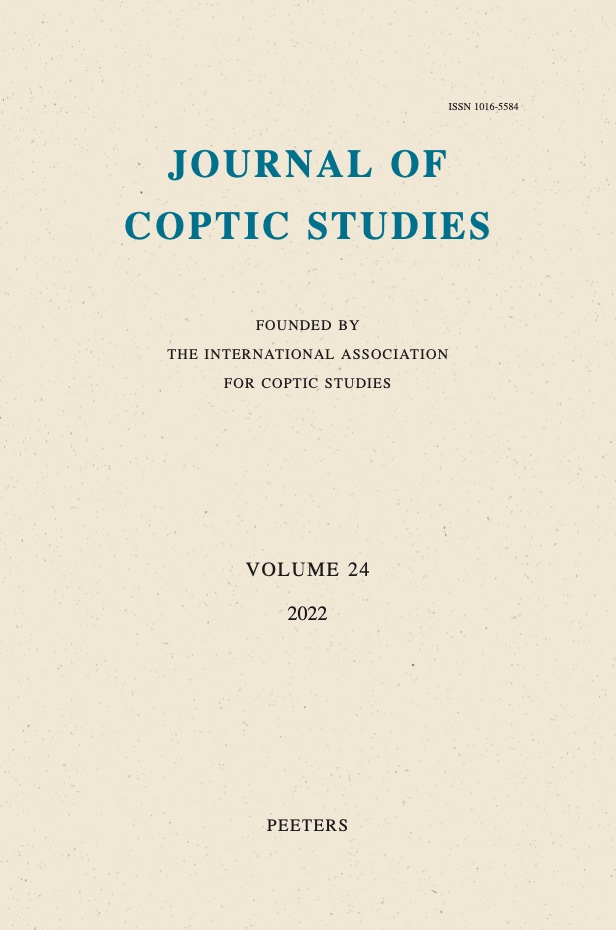 previous article in this issue previous article in this issue | next article in this issue  |

Preview first page |
Document Details : Title: P.Méd.Copt. IFAO - Die umfangreichste Quelle koptischsprachiger Arzneikunde Subtitle: Nur eine unsystematische Rezeptsammlung?! Author(s): GRONS, Anne Journal: Journal of Coptic Studies Volume: 26 Date: 2024 Pages: 193-225 DOI: 10.2143/JCS.26.0.3293459 Abstract : The corpus of Coptic pharmacological recipes offers a multitude of information about the treatment of very different medical complaints. This information is usually organized within an individual prescription in a rather fixed structure, with the medical indication (often in combination with the dosage form to be prepared) mentioned first, followed by the various ingredients and their processing, and finally completed by the application and sometimes a specification of certain effects or the general effectiveness of a remedy. Far more exciting, but also more difficult to answer, however, is the question of how these individual recipes are organized and structured within larger collections or medical compendia. And also, whether and how such ways of organizing knowledge can differ in the attested types of Coptic pharmacological texts. The example discussed in this paper represents the most comprehensive source of Coptic pharmacology, the papyrus P.Méd.Copt. IFAO, a collection of more than 200 different recipes. Even though many contributions to this text repeatedly state that the recipes included were arranged randomly and without a system, the study presented here shows that this is not the case. As will be shown, the text offers clear patterns of order that become more or less visible depending on the parameters used — such as similarities in content, the distribution of Greek and Arabic loanwords or the use of measurements and quantities. By analysing the identified patterns, it was also possible to gather information about the sources and Vorlagen, the composition of the text and its group of users, enabling a better understanding of this and other medical and pharmacological texts in Coptic. |
|


